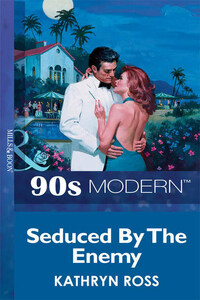HarperCollinsPublishers 77–85 Fulham Palace Road, Hammersmith, London W6 8JB
www.harpercollins.co.uk
First published in 1989 by Collins
This edition first issued in 1991 by Fontana
Copyright © Gwendoline Butler 1989
Cover layout design © HarperCollinsPublishers 2014
Cover photographs © Shutterstock.com
Gwendoline Butler asserts the moral right to be identified as the author of this work
All rights reserved under International and Pan-American Copyright Conventions. By payment of the required fees, you have been granted the nonexclusive, nontransferable right to access and read the text of this e-book on-screen. No part of this text may be reproduced, transmitted, decompiled, reverse-engineered, or stored in or introduced into any information storage and retrieval system, in any form or by any means, whether electronic or mechanical, now known or hereinafter invented, without the express written permission of HarperCollins e-books.
HarperCollinsPublishers has made every reasonable effort to ensure that any picture content and written content in this ebook has been included or removed in accordance with the contractual and technological constraints in operation at the time of publication.
Source ISBN: 9780006179108
Ebook Edition © JULY 2014 ISBN: 9780007545476
Version: 2014–07–07
‘What is that crowd?’ said John Coffin, looking down from his tower at the street below. A grey London street. ‘Who’s dead now?’
It was a joke, but he thought a lot about death. In a way it was his job.
Death was a long-stay visitor in the district he was observing with a proprietary interest. Poverty, disease, and several wars over the centuries had seen to it. But death comes in different packets, sometimes mercifully, sometimes stealthily, sometimes brutally and murderously. The district had known plenty of that sort of death too.
In the Middle Ages an instrument of violent death, whether cudgel, knife or even a simple horse that had thrown its rider, was deemed too dangerous to be let loose on the world, was declared ‘deodand’, given to God.
In twentieth-century England, such an object is apt to be put by the police in a Black Museum. But perhaps the power is not thus exorcized.
‘I suppose it’s going a bit far to call it a crowd.’ On closer inspection it appeared to be a child and two women staring at something in the gutter. But over the years John Coffin had developed a certain sensitivity to a group of people staring at a something. Professional sensitivity. It usually meant trouble on the way, and that was where he came in.
He took another look down on the street at the interestingly foreshortened view of heads, one curly and golden, and two hatted in the style favoured in the district by older ladies in summer, flowered and frothy.
Yes, from up here they looked as if they were getting excited. But it was a long way down. He could ignore it.
When John Coffin, policeman, said he lived in a church, it was understandable that people looked surprised.
‘St Luke’s Old Church,’ he would explain patiently. It was now a secular building. The bishop or someone like that had come in and deconsecrated it. Once you used to have to take the roof off, but that didn’t seem to be necessary now. Or was that just for castles, when an invading army swept in and ravaged the town? Slighting a castle, wasn’t it called? St Luke’s had come near to slighting itself.
St Luke’s, an old City church, in an area not far from the Tower of London, nor far from the maze of streets where Jack the Ripper had operated, had been in a bad way, the congregation long since diminished and the roof never quite patched up from bomb damage.
Where he lived was going to be called St Luke’s Mansions (although it still looked unmistakably like a church with a bell tower and a tiny paved yard), a set of luxury apartments, but until the Post Office got round to making this clear to everyone, if you wanted your letters and visitors it was best to say you lived in St Luke’s. The locals knew what you meant and it was good for outsiders to get a surprise.
When his sister Letty had told him that she had bought a church, Coffin had been surprised himself.
‘I’ve bought you a church,’ she had said.
‘Oh, thanks.’
‘And you’re going to live in it.’
‘Thanks again.’
‘But it’s going to be a theatre.’
This time no thanks sprang to his lips. He was silenced. His sister Lætitia Bingham never failed to surprise him, she was a lady of such enterprise and style. All he could do was listen. If Letty said he was about to live in a church which would also be a theatre, then it was what would happen. She had a way of making the impossible possible.
‘Specializing in Elizabethan and Jacobean drama. It’ll be a very small theatre. The smallest ever, I should think.’ An uncharacteristic piece of exaggeration on her part. Lætitia was a lawyer and not a girl to overstate things, but it showed how moved she was by what she had done. ‘It’s a listed building, so the façade will be preserved, but inside will be three apartments and, of course, the theatre and a small theatre workshop.’














